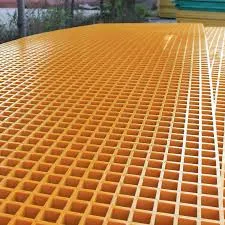
-
 Afrikaans
Afrikaans -
 Albanian
Albanian -
 Amharic
Amharic -
 Arabic
Arabic -
 Armenian
Armenian -
 Azerbaijani
Azerbaijani -
 Basque
Basque -
 Belarusian
Belarusian -
 Bengali
Bengali -
 Bosnian
Bosnian -
 Bulgarian
Bulgarian -
 Catalan
Catalan -
 Cebuano
Cebuano -
 China
China -
 China (Taiwan)
China (Taiwan) -
 Corsican
Corsican -
 Croatian
Croatian -
 Czech
Czech -
 Danish
Danish -
 Dutch
Dutch -
 English
English -
 Esperanto
Esperanto -
 Estonian
Estonian -
 Finnish
Finnish -
 French
French -
 Frisian
Frisian -
 Galician
Galician -
 Georgian
Georgian -
 German
German -
 Greek
Greek -
 Gujarati
Gujarati -
 Haitian Creole
Haitian Creole -
 hausa
hausa -
 hawaiian
hawaiian -
 Hebrew
Hebrew -
 Hindi
Hindi -
 Miao
Miao -
 Hungarian
Hungarian -
 Icelandic
Icelandic -
 igbo
igbo -
 Indonesian
Indonesian -
 irish
irish -
 Italian
Italian -
 Japanese
Japanese -
 Javanese
Javanese -
 Kannada
Kannada -
 kazakh
kazakh -
 Khmer
Khmer -
 Rwandese
Rwandese -
 Korean
Korean -
 Kurdish
Kurdish -
 Kyrgyz
Kyrgyz -
 Lao
Lao -
 Latin
Latin -
 Latvian
Latvian -
 Lithuanian
Lithuanian -
 Luxembourgish
Luxembourgish -
 Macedonian
Macedonian -
 Malgashi
Malgashi -
 Malay
Malay -
 Malayalam
Malayalam -
 Maltese
Maltese -
 Maori
Maori -
 Marathi
Marathi -
 Mongolian
Mongolian -
 Myanmar
Myanmar -
 Nepali
Nepali -
 Norwegian
Norwegian -
 Norwegian
Norwegian -
 Occitan
Occitan -
 Pashto
Pashto -
 Persian
Persian -
 Polish
Polish -
 Portuguese
Portuguese -
 Punjabi
Punjabi -
 Romanian
Romanian -
 Russian
Russian -
 Samoan
Samoan -
 Scottish Gaelic
Scottish Gaelic -
 Serbian
Serbian -
 Sesotho
Sesotho -
 Shona
Shona -
 Sindhi
Sindhi -
 Sinhala
Sinhala -
 Slovak
Slovak -
 Slovenian
Slovenian -
 Somali
Somali -
 Spanish
Spanish -
 Sundanese
Sundanese -
 Swahili
Swahili -
 Swedish
Swedish -
 Tagalog
Tagalog -
 Tajik
Tajik -
 Tamil
Tamil -
 Tatar
Tatar -
 Telugu
Telugu -
 Thai
Thai -
 Turkish
Turkish -
 Turkmen
Turkmen -
 Ukrainian
Ukrainian -
 Urdu
Urdu -
 Uighur
Uighur -
 Uzbek
Uzbek -
 Vietnamese
Vietnamese -
 Welsh
Welsh -
 Bantu
Bantu -
 Yiddish
Yiddish -
 Yoruba
Yoruba -
 Zulu
Zulu
Exploring Innovative Solutions in GRP Chemical Products for Diverse Applications
Understanding GRP Chemical Products Their Importance and Applications
Glass Reinforced Plastic (GRP), also known as fiberglass, is a composite material made from a polymer matrix reinforced with glass fibers. This innovative material has garnered significant attention in various industries due to its excellent properties, including high strength, lightweight, corrosion resistance, and versatility. As a result, GRP chemical products have become essential in applications ranging from construction to automotive, aerospace, and marine sectors.
Properties of GRP Chemical Products
The primary reason for the popularity of GRP chemical products lies in their exceptional physical and chemical properties. GRP materials are inherently strong and durable, making them ideal for applications that require structural integrity and resilience against environmental factors. The glass fibers provide high tensile strength, while the polymer matrix offers flexibility, ensuring that GRP can withstand considerable stress without compromising stability.
Moreover, GRP is highly resistant to chemicals and corrosion, which enhances its longevity and makes it suitable for use in harsh environments. This property is particularly important in chemical processing, where exposure to aggressive substances can lead to the degradation of other materials. Additionally, GRP is non-conductive, which adds another level of safety, especially in electrical applications.
Applications of GRP Chemical Products
The versatility of GRP has led to its adoption across various sectors. In construction, GRP is used for architectural elements, roofing, and even structural components. Its lightweight nature makes it an excellent alternative to traditional building materials, allowing for easier transportation and installation.
grp chemical product

In the automotive industry, GRP is widely used in manufacturing car bodies and components. The lightweight characteristics of GRP contribute to improved fuel efficiency and overall vehicle performance. Additionally, its ability to be molded into complex shapes allows for innovative design solutions that can enhance aerodynamics and aesthetics.
Aerospace is another sector where GRP has made significant inroads. The aviation industry requires materials that are lightweight yet robust. GRP meets these criteria, offering a solution for various components, including fuselages and interior parts. The use of GRP can lead to weight reductions, which is crucial for improving fuel efficiency and extending the range of aircraft.
Marine applications utilize GRP for constructing boats and ships. The material's resistance to water and saltwater corrosion makes it an ideal choice for hulls and other components that are constantly exposed to marine environments. GRP boats are not only lightweight but also require less maintenance than their metal counterparts.
Future Trends
As technology continues to evolve, the market for GRP chemical products is expected to expand. Innovations in manufacturing processes and the introduction of hybrid materials are likely to enhance the properties of GRP, making it even more appealing. Furthermore, the growing emphasis on sustainability is prompting research into bio-based resins and recyclable glass fibers, potentially leading to greener GRP solutions.
In conclusion, GRP chemical products present a compelling case for their use in numerous applications due to their remarkable properties and adaptability. With industries continuously seeking lightweight, strong, and corrosion-resistant materials, the future of GRP remains bright, paving the way for ongoing advancements and new opportunities across various fields. The integration of GRP into emerging technologies will undoubtedly play a critical role in shaping the future of manufacturing and engineering, highlighting the importance of this remarkable material in our modern world.









